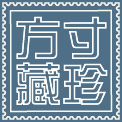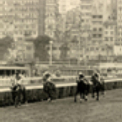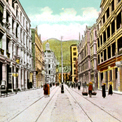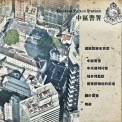Consumer Prices in Hong Kong before the Second World War
With the adoption of the silver standard in 1862 and the minting of the first one-dollar coin in Hong Kong in 1866, the “dollar” was firmly established as the city’s monetary unit. The purchasing power of a one-dollar coin has decreased over the years, but its value before the Second World War should not be underestimated. In 1939, a skilled rubber shoe factory worker made no more than a dollar a day, while a rickshaw puller made about sixty to seventy cents. This may not sound much, but before the war one dollar could buy ten pounds of rice, or five pounds of wheat bread, or nearly two pounds of beef or pork. With figures taken from Hong Kong government publications, the table below compares the prices of a selection of food in 1866 and 1939.
| Food | Price (per pound) 1866 |
Price (per pound) 1939 |
Percentage increase |
|---|---|---|---|
| Rice | $0.04 | $0.10 | 150% |
| Wheat bread | $0.10 | $0.20 | 100% |
| Beef | $0.14 | $0.65 | 364% |
| Pork | $0.16 | $0.55 | 244% |
Consumer Prices in Hong Kong during the Japanese Occupation
When the Japanese army first occupied the city, the Hong Kong dollar continued to circulate alongside Japanese military notes. Before their use was totally banned on 1 June 1943, Hong Kong dollars could be exchanged for military yen at a rate of four to one. After that date, Japanese military notes were the only currency that could be used for commercial transactions and to pay salaries. The shortage of supplies saw the introduction of rice rationing, while meat and vegetables were only available to appointed retailers through a wholesale system. Consumer prices, which had already doubled when the Japanese army invaded Hong Kong in December 1941, spiralled out of control during the occupation, putting virtually everything way beyond the purchasing power of most people. Many had to subsist on cassava, and malnutrition meant beriberi was common. Countless people died of starvation or illnesses during this period. Using a selection of food prices published in Chinese newspapers at the time, the table below shows the increase in consumer prices between 1941 and 1945.
| Food | Price (per catty) Late 1941 |
Price (per catty) Mid-1945 |
Percentage increase |
|---|---|---|---|
| Rice | $0.13 | 100 military yen (equivalent to $400) |
307,592% |
| Beef | $1.5 | 133 military yen (equivalent to $532) |
35,367% |
| Pork | $2.5 | 175 military yen (equivalent to $700) |
27,900% |
| Chicken | $3.8 | 196 military yen (equivalent to $784) |
20,532% |
Consumer Prices in Hong Kong after the Second World War
Consumer prices in Hong Kong soared after the Second World War, as can be illustrated by the example of daily necessities: before the war, ten cents could buy five to six catties of firewood, but only one catty in 1946; a catty of oil before the war cost $0.24, but $2.30 in 1946. Post-war wages had to be adjusted to meet the soaring prices: the highest wage for skilled labour jumped from $1 a day before the war to $5 a day in 1946, the monthly salary for bus drivers from $55 to $184. The pre-war and post-war cost of living could not have been more different. As the Hong Kong economy began to take off over the next twenty years, consumer prices were driven to almost double what they had been. Using prices for a selection of food taken from Hong Kong government publications, the table below shows the increase in consumer prices between 1947 and 1967.
| Food | Price (per catty) March 1947 |
Price (per catty) Late 1967 |
Percentage increase |
|---|---|---|---|
| Top grade rice | $0.4 | $1.08 | 170% |
| Beef | $2.0 | $4.57 | 129% |
| Pork | $2.8 | $3.96 | 41% |
| Chinese white cabbage | $0.28 | $0.42 | 50% |
| Flowering Chinese cabbage | $0.40 | $0.80 | 100% |
| Golden thread | $1.03 | $2.01 | 95% |
| Grass carp | $1.06 | $3.50 | 230% |
Consumer Prices in Hong Kong since the 1970s
Hong Kong’s economy took off in the 1970s, and the territory also made good use of the opportunities provided by the mainland’s economic reforms to transform itself from an industrial city into an international metropolis and service and financial centre. The Median Monthly Employment Earnings of Employed Persons has risen from less than $1,000 in 1971 to $11,000 in 2010. This increase in income has been accompanied by a rise in consumer prices at an inflation rate six times higher than before. Using prices for a selection of food taken from Hong Kong government publications, the table below shows the increase in consumer prices between 1971 and 2010.
| Food | Price (per kg) 1971 |
Price (per kg) 2010 |
Percentage increase |
|---|---|---|---|
| Top grade rice | $1.67 | $10.94 | 555% |
| Pork | $8.15 | $54.77 | 572% |
| Beef | $11.18 | $98.11 | 778% |
| Live chicken | $9.64 | $76.07 | 689% |
| Rice duck | $6.12 | $25.77 | 321% |
| Golden thread | $4.93 | $61.03 | 1,138% |
| Garoupa | $11.16 | $86.32 | 673% |
| Grass carp | $9.57 | $37.30 | 290% |
| Chinese white cabbage | $1.54 | $14.89 | 867% |
| Flowering Chinese cabbage | $2.41 | $18.29 | 659% |
| Orange (each) | $0.49 | $3.82 | 680% |
| Egg (each) | $0.21 | $1.34 | 538% |





